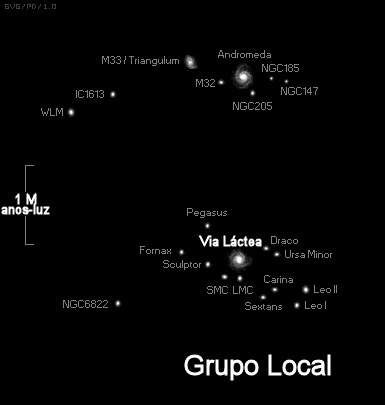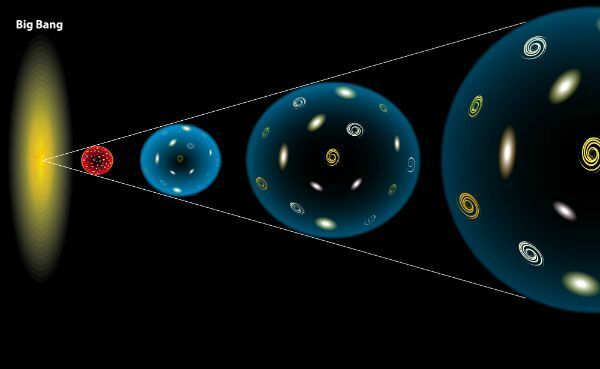The quest for understanding how the process that gave rise to the current universe was triggered, provided – and still provides – several debates, researches and theories that can explain such phenomenon. It is a topic that arouses great curiosity in humans since the most remote times and generates great controversies, involving religious, philosophical and scientific concepts.
So far, the most accepted explanation of the origin of the universe among the scientific community is based on the theory of the Big Explosion, in English, Big Bang. It relies in part on the theory of relativity of the physicist Albert Einstein (1879-1955) and on the studies of astronomers Edwin Hubble (1889-1953) and Milton Humason (1891-1972), who demonstrated that the universe is not static and is constantly expanding, that is, the galaxies are moving away from one of the others. Therefore, in the past they should have been closer than they are today, and even forming a single point.
The Big Bang theory was announced in 1948 by the American-born Russian scientist, George Gamow (1904-1968) and the Belgian priest and astronomer Georges Lemaître (1894-1966). According to them, the universe would have emerged after a great cosmic explosion, between 10 and 20 billion years ago. The term explosion refers to a great release of energy, creating spacetime.
Until then, there was a mixture of subatomic particles (qharks, electrons, neutrinos and their particles) that moved in all directions at speeds close to the speed of light. The first heavy particles, protons and neutrons, joined together to form the nuclei of light atoms such as hydrogen, helium and lithium, which are among the main chemical elements in universe.
As it expanded, the universe also cooled, turning from violet to yellow, then orange and red. About 1 million years after the initial moment, matter and light radiation separated and the Universe became transparent: with the union of electrons to atomic nuclei, light can walk freely. About 1 billion years after the Big Bang, chemical elements began to unite giving rise to galaxies.
This is the systematic explanation of the origin of the universe, according to the Big Bang theory. Accepted by most scientists, however, much contested by some researchers. Therefore, the origin of the universe is a theme that generates many divergent opinions, requiring a critical analysis of each aspect that can explain this event.
Do not stop now... There's more after the advertising ;)
By Wagner de Cerqueira and Francisco
Graduated in Geography
Would you like to reference this text in a school or academic work? Look:
FRANCISCO, Wagner de Cerqueira and. "Big Bang - The Big Bang Theory"; Brazil School. Available in: https://brasilescola.uol.com.br/geografia/big-bang.htm. Accessed on June 27, 2021.



